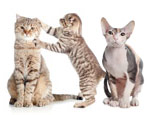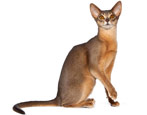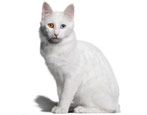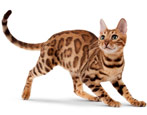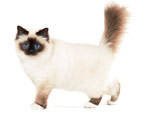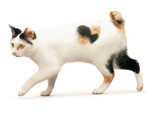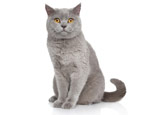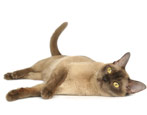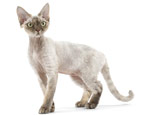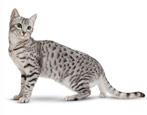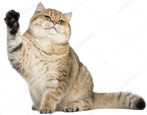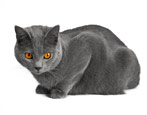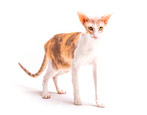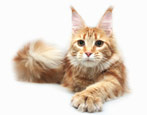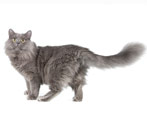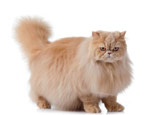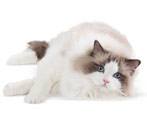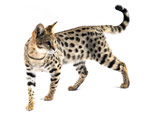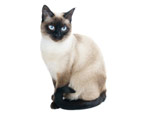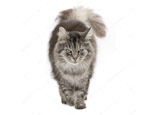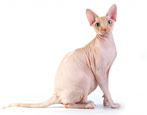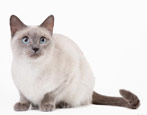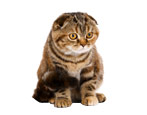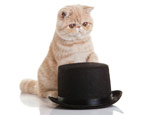Gray cats: character and subtleties of care
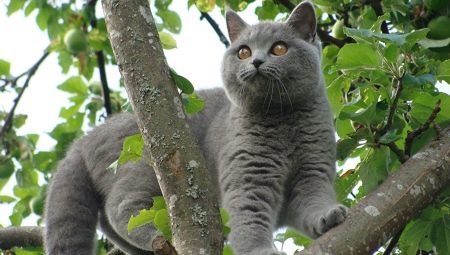
Cats of gray, or rather, blue, traditionally attract human attention. This color with an esoteric, mysterious touch is associated with lunar silver. Restrained animal manners, mysterious character and look, extraordinary dignity, grace and calmness - this image leaves few people indifferent. Always and everywhere cats were treated with soul and respect. These animals were welcomed both in the palaces of kings and in the huts of commoners. Being excellent hunters for rodents, they not only delighted the eye and soul, but also brought a lot of benefits.
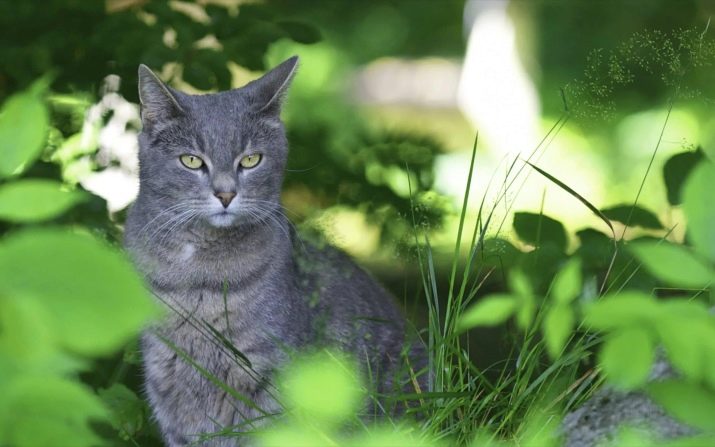
Color features
Her Majesty genetics, intricately combining dominant and recessive genes, presents us with many surprises. Such a pleasant surprise is the gray color of the cats with different shades.In our case, the dominant gene responsible for black and white color stimulates the formation of gray color in animals.
The actual amount of black pigment is the same in both gray and darker cats. The difference lies in the specific distribution of the pigment. So, in cats with a black color, the pigmentation of the hairs is uniform, but in gray cats, the coloring elements are concentrated in the core of the hair. Refracting through the outer layer of the hair, the light gets a gray tint at the exit.
The amount of pigment, however, affects the intensity of the color.
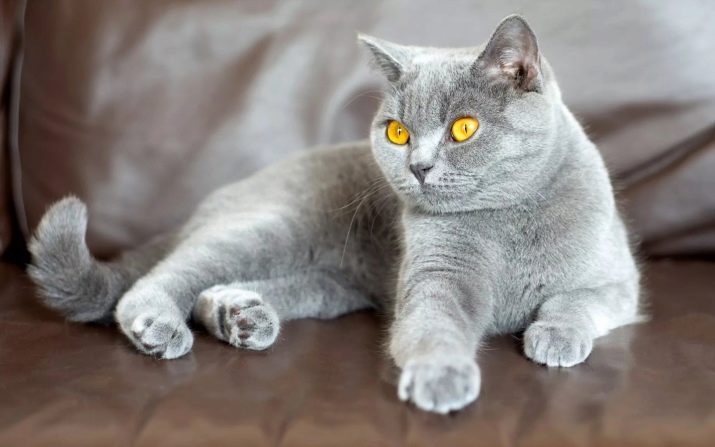
Occasionally, a gene mutation occurs when the ends of the hair become white, while the black pigment is concentrated in the lower part of the hair. Reverse combinations are not excluded - the roots get white pigmentation, and the hair on top is black. Such a cover is associated with frost and looks unusually solemn.
In a professional environment, the color of wool with gray shades is called blue, and sometimes blue.Breeders in many countries have long tried to get a breed with an absolutely gray color and blue tint. A feature of this color is the absence of red (red) pigment. But for gray or blue color, warm shades are also characteristic, which are observed in animals with a dominant "red" gene. This color is called lilac.
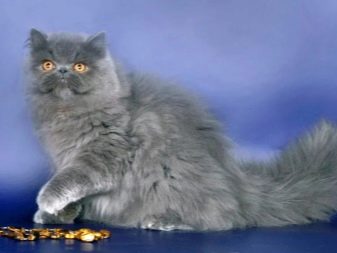
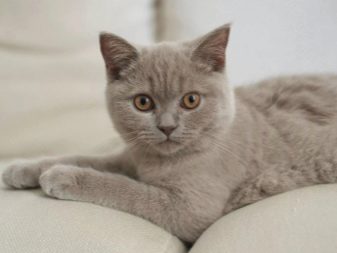
Color details are essential. So, the smoky color is associated with harmony, understanding and peace. The "striped" style is typical for adventurers who bring changes to the measured life of the owner. Oddly enough, but the associative array corresponding to the color of the pet often becomes real, embodied in the character and behavior of animals. It is likely that the future, conservative-minded owner should not take the striped robber into the house.
But a gray cat, a blue aristocrat is a wonderful gift for a spicy woman and not only. Associations of love and romanticism are associated with it.

Character
Gray felines are reminiscent of dark cardinals - a calm, balanced character, displayed dignified and dignified. They cannot stand familiarity and long active games - "business has time, and fun is an hour." They are somewhat ironic and condescending. Feeling the love of the owner, they forgive him a lot. But if they do decide to take revenge, then it will be extremely unexpected and insidious, since such an action is planned in detail, thoughtfully and for a long time.
The element of gray pets is comfort and measured, solid life. Children, for obvious reasons, are of little interest to them. These animals are intellectuals, contemplators and observers of the aristocracy. Unobtrusive, gentle leaders, often prone to a dignified retreat, more like a condescending disregard. If only to preserve its reputation and calm being.
Pets with an ash or steel shade are more suitable for bachelors, retirees, people with an established and even lifestyle.
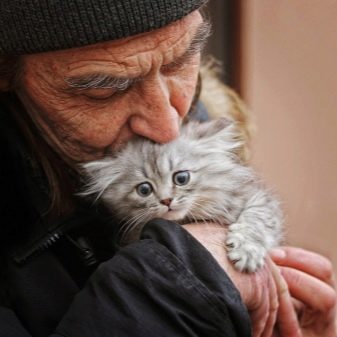
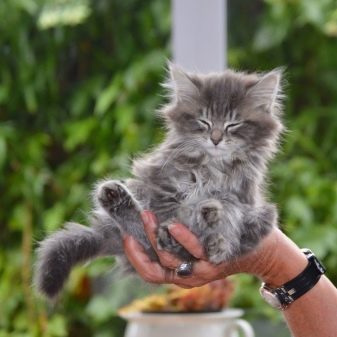
Cats with a blue color are more aristocratic, this trait manifests itself in them both externally and in behavior. They present themselves independently and proudly, like aristocrats of blood. From a young age, their behavior is such that there is no other status for them than the "master" of the house. From childhood, demonstrating calmness and nobility, kittens set the appropriate bar for behavior, which they never change. Notrarely, but for a short time, they develop playfulness, but there are also closed natures who constantly observe a certain distance established by them.
The solid blue color is characteristic of curious intellectuals, cats devoted to the owner. They like to sleep in the arms of their owner or relax next to them in an afternoon nap. But loneliness does not scare them either - they will always find something to their liking, avoiding leprosy, adequately preserving their inherent image. When you return home, you will not find any mess - it is not their lot to misbehave.
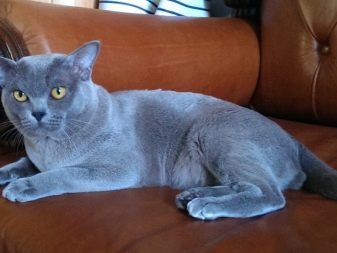
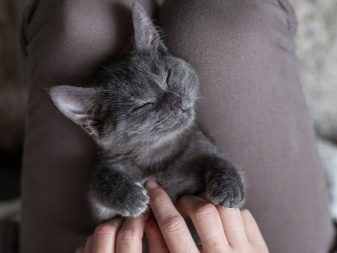
Esotericism is in some way close to psychology. Therefore, referring to the fact that signs and beliefs, having their origins in observation and folk memory, reflect certain character traits of animals, we will give several examples:
- gray cats bring material well-being - "money talisman";
- the cat constantly sleeps on its back - in the future, you will not live in poverty;
- the cat curled up in a ball and covered its nose - to bad weather;
- "Gray cat - happy turn", "gray cat - happy path";
- gray cat attracts grooms to the house of an unmarried girl - "gray cat - love spell";
- blue cats contribute to the prevention of cardiovascular and neurological diseases (a kind of family doctor);
- a green-eyed gray-haired cat with its aura provides protection to the house from misfortunes;
- blue animals have a beneficial effect on pregnant women and the fetus, eliminating nervous breakdowns and disorders;
- gray cat into the house - moreover, good luck;
- gray cats - a talisman against damage and the evil eye;
- green-eyed, gray cats are excellent healers.
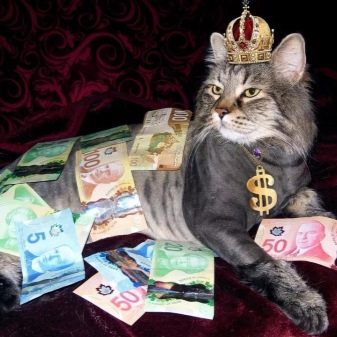
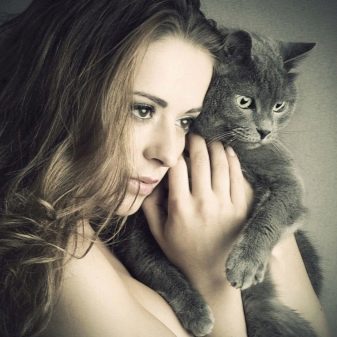
Eye colors
It is noteworthy that all kittens are born with blue eyes. The kitten acquires its own, "native", formed at the genetic level, eye color at 3 or 4 months of age. Bright and rich shades are typical for the most thoroughbred representatives.
The degree of correspondence of eye color to a specific color is regulated by the rules of exhibitions. For example, a Briton with a black solid color and green eyes will be a marriage, but a green-eyed oriental cat will be the norm.... Some breeds only have one eye color. Such are the blue Russians who can only have green eyes.
In accordance with the established color codes, the color of the eyes is also provided - blue, green and yellow. Other colors can be in cats with acromilanic color, which is characterized by partial albinism.
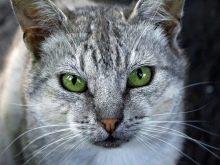
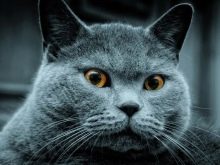
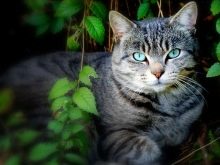
Green-eyed is inherent in the following varieties of blue and smoky animals:
- caramel;
- part-color;
- tabby;
- solid;
- tortoiseshell.
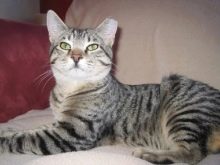

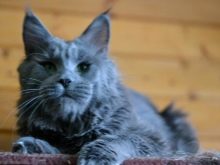
Breeds
Experts know that in the presence of hundreds of different breed organizations, there are only 3 "head" clubs where purebred cats are registered:
- World FIFe - International Federation - recognizes 42 breeds;
- European WCF - World Federation - recognizes 70 breeds;
- American CFA - Cat Fanciers Association - recognizes 40 breeds.
The gray color is present in a wide variety of breeds. In this case, the gray color can be smoky, tortoiseshell, tiger or leopard. Grayish tones range from light silver to dark tabby.
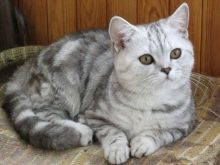
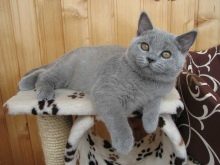
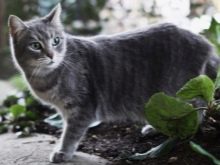
The owners of a blue or smoky "dress" are, for example, breeds:
- Persian;
- Russian blue (long-haired version - Nibelung)
- American curl;
- fluffy Turkish Angora;
- british longhair;
- Maine Coon;
- Siberian;
- exotic;
- Kurilian long-haired bobtail;
- la-perm long-haired;
- American long-haired bobtail;
- pixiebob longhaired;
- somali.
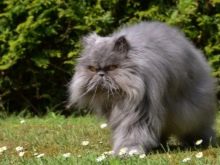
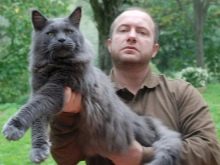
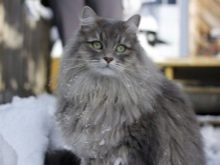
Below are the characteristics of some of the breeds recognized by one or another international club.
Persian
Persian cats are very different from their relatives. The physique is usually medium-large. Males weigh up to 8 kg, females up to 4 kg. The head and shape of the muzzle are divided into two types - classic (short, slightly upturned nose); extreme (flattened, slightly depressed muzzle with a snub nose). The coat is soft, it can be either short or long. The eyes are oval, the color varies widely - from blue to orange.
The character of the Persians is not spiteful, headstrong. The breed is completely domestic, not adapted to life in the wild. Animals are moderately playful, friendly with children. They get used to the owner tightly, choosing only one object of adoration for themselves.
They are very affectionate, they love a comfortable environment, they adore cozy places.
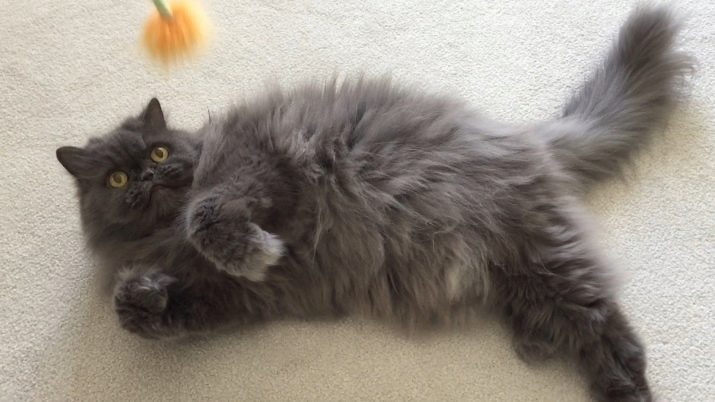
The Persian line (recognized by the WCF, CFA) is a champion in the variety and length of the coat (up to 20 cm). Fluffy Persians are represented by several subspecies:
- pewters (pewter Persian);
- tortoiseshell Persian;
- Persian tabby;
- bluish cream Persian.
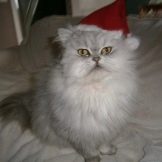
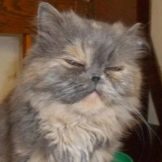
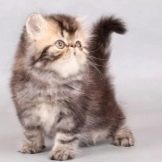
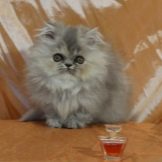
The specified subspecies are in many ways similar to each other and it is easy to confuse them with each other.
Nibelung
Nibelung, with a poetic translation "child of the fog", which fully justifies its appearance. Animals of medium size, with a moderately developed muscular system. Weight - up to 7 kg. The type is active, graceful. The cover is silvery, soft, thick, silky-delicate.
The nature is balanced, friendly-minded, sociable. Loyal monogamous, unobtrusive and moderately playful. The eyes are often green, but sometimes amber in color.
The breed is rare. Not all nurseries accept applications for an animal.
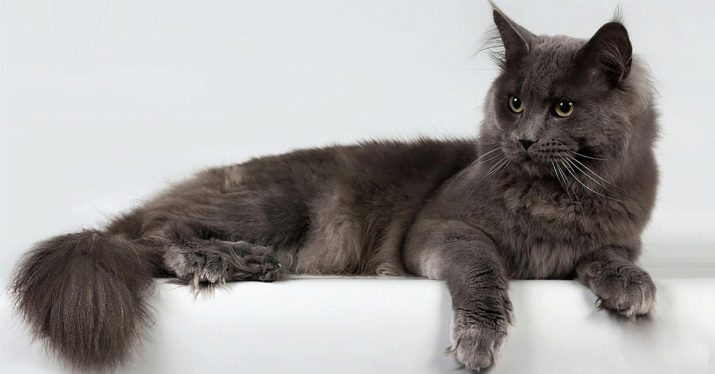
American longhaired curl
The breed is recognized by the WCF. It is an unusual animal with inverted elven ears that look like miniature horns. The coat is dense, silky. Curls are friendly, relatively unpretentious and independent. Perfectly adapt to new conditions, unique playfuls even at a respectable age. They amaze with their harmonious physique with an excellently developed muscular system. Weight - up to 5 kg.
Kittens are born with straight ears, which gradually curl up as they grow up. Their ears fold in moments of severe stress, with fright. "Companion cat" - so it is often called because of the docile and friendly attitude. The breed is unobtrusive, lively and balanced. Eye color in a wide range of colors. Connoisseurs of the breed are ready to pay up to 20,000 rubles for it.
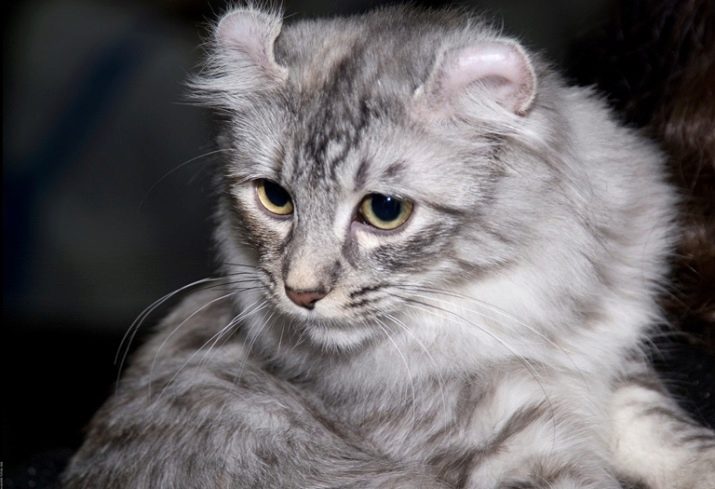
Turkish angora
A breed with an ancient, rich history associated with extinction and rebirth. The slender and slightly elongated body of the animal amazes with its flexibility, plasticity and grace. Weight - up to 5 kg. It has a special, soft and silky skin. The range of colors is from white to gray. Unique wool and elongated, fluffy tail are a real decoration of angora.
To their liking, they are sociable and balanced, moderately playful, love height, strongly attached to the owner. They willingly communicate with children. They value attention and affectionate attitude. The breed is easily trained in various tricks, is able to amaze the viewer with walking on its hind legs, correct reactions to the commands "voice" and "fetch".
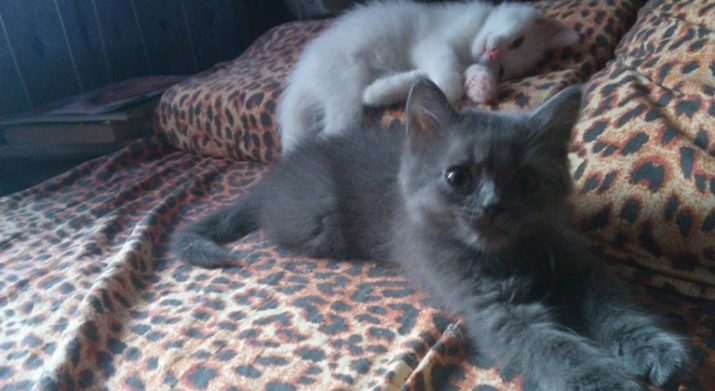
Eye color is a unique feature of angora. Basically, most of them have heterochromia - multi-colored eyes.
Often this is an unusual combination of bright greens and rich blues. The breed is extremely popular in the world. Gray and smoky angoras are a unique and desirable decoration in the home. In this case, the word "gray" loses its basic meaning and acquires a new one - a miracle!
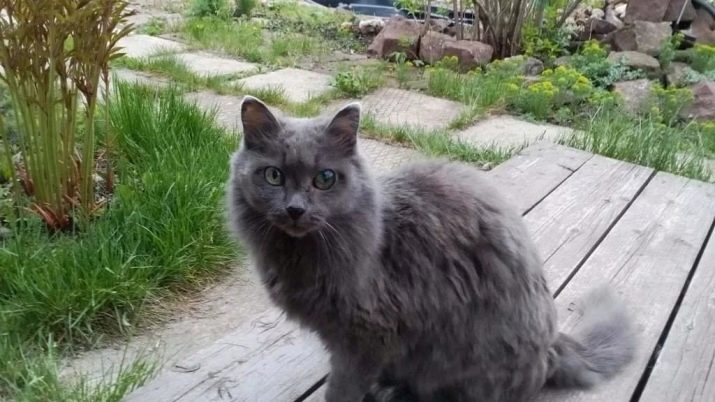
Somali
Small size, grace, fragility and harmonious proportions of the body. The breed is energetic, agile and extremely curious. Somalis are easy to train, quickly memorizing the necessary commands. They love to be in the spotlight, great actors, obedient and unobtrusive. Remain playful even into adulthood.
Somalis are real pirates and it is impossible to get bored with them. Of the existing colors, blue is popular, the coat is a smoky blue zonal color with light beige or cream shades at the base. The tip of the nose is brownish. A funny and funny animal.
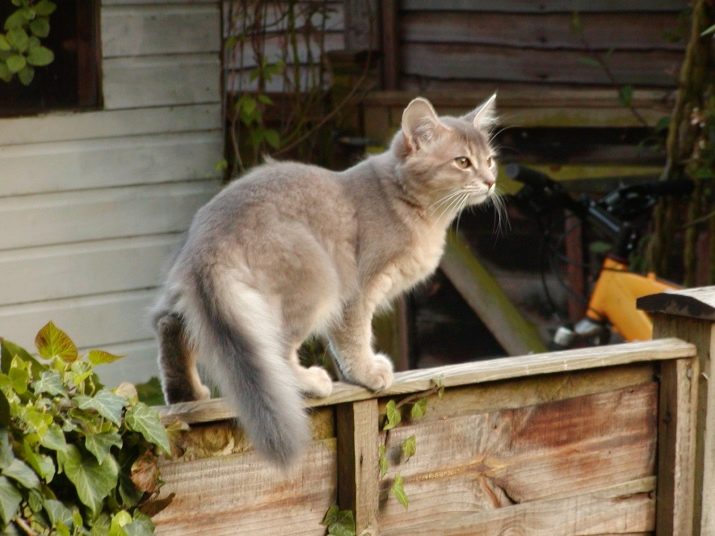
A few words about the breeds worthy of special attention.
- British Longhair (recognized by WCF, CFA) - one of the subspecies of the aboriginal British cat. An animal with a rich and long history. Has an ideal family character.
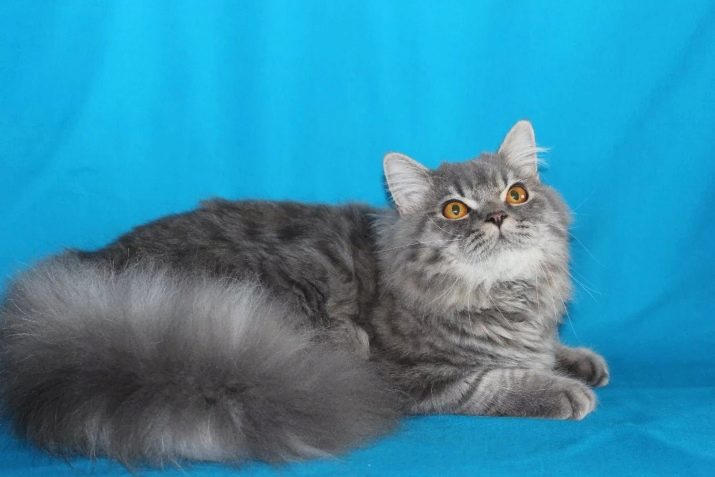
- Maine Coon (recognized by WCF, CFA) - the largest in the family of domestic cats. In adulthood, it reaches a weight of up to 10 kg (muscle mass). Serious cat, with a wild appearance and tassels on the ears.
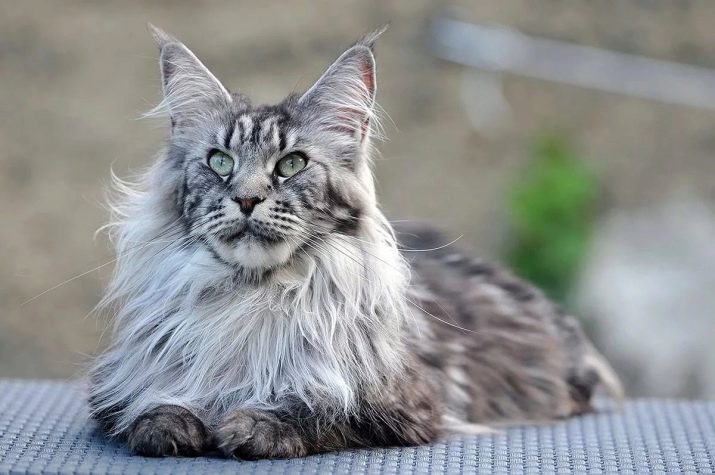
- Siberian (recognized by WCF, CFA) - a breed with a long history and an extremely strong gene pool. A family breed that does not like to mess around. Good hunters, fearless and curious.
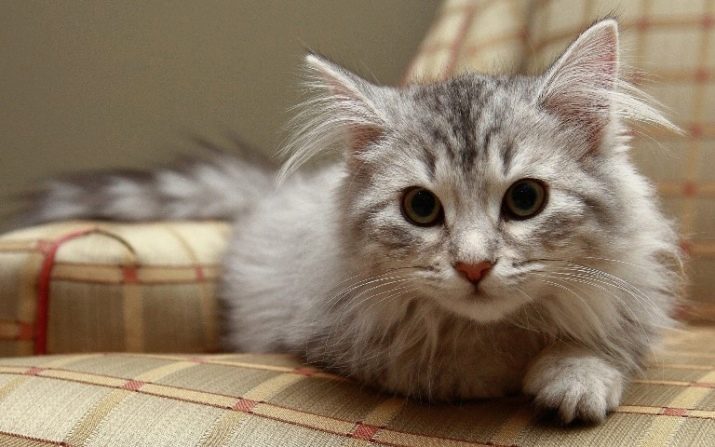
- Exotic (recognized by WCF, CFA) Is a popular breed with huge eyes and a slightly flattened nose. A separate type of Persian breed.
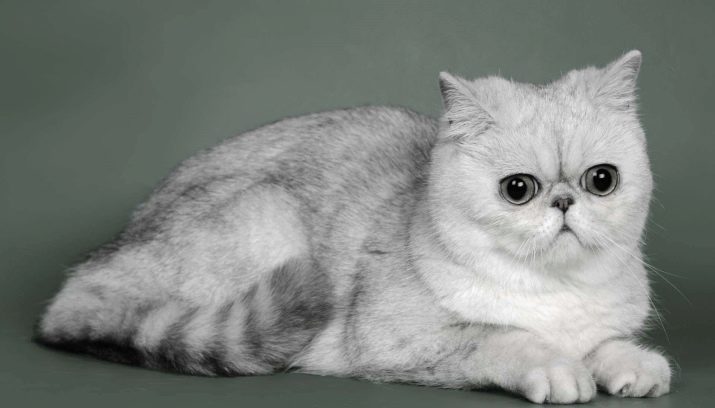
- Kurilian Longhaired Bobtail (FIFe recognized). Life in harsh climatic conditions, in limited areas, predetermined the firm and resilient nature of animals. The owner of a "hare" tail and an unusual body shape is the national breed of Russia.
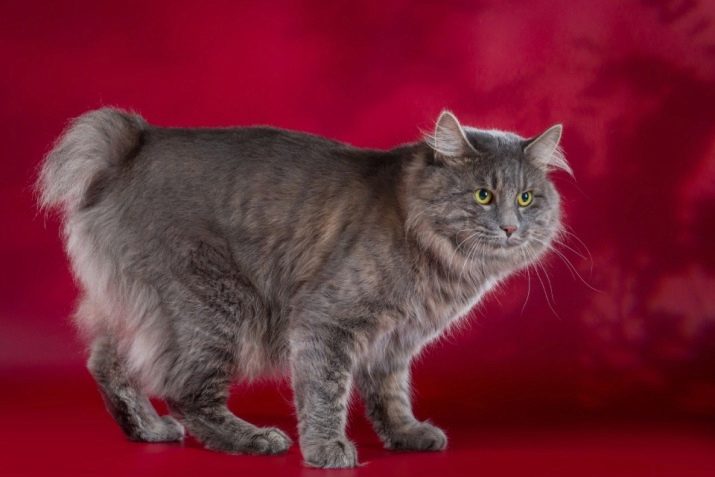
- La Perm longhaired (CFA recognized) - breed with curly hair. A kind of gift from nature, reminiscent of a shaggy lamb. An unusual and beautiful animal.
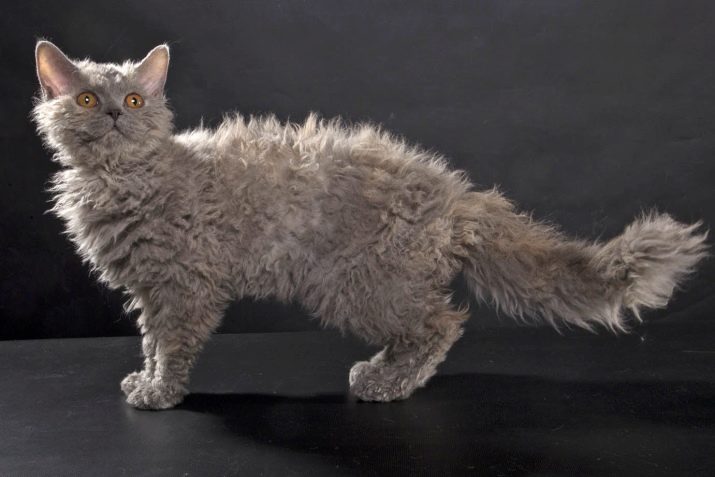
- American Longhaired Bobtail (CFA Recognized) - an impressive size, good-natured, tailless animal. Dislikes loneliness, sociable, including with children.
Good for large families, loves to feel connected to the life of their owners.
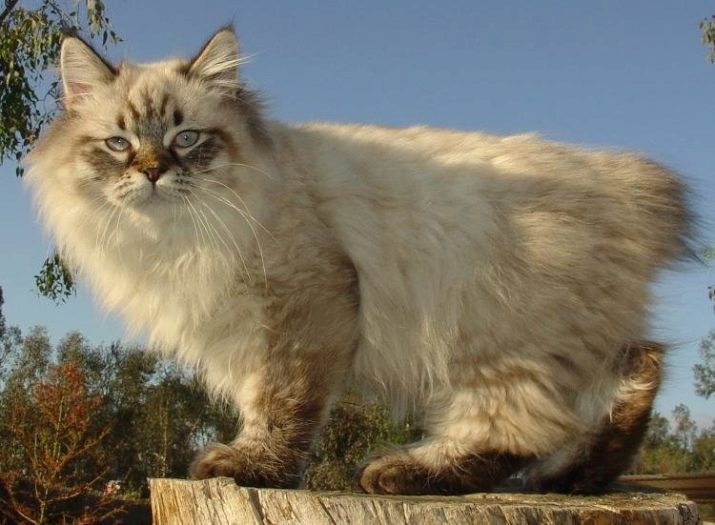
- Pixiebob longhaired (short-tailed elf) - a breed of short-legged cats with tassels on the ears. Gentle, friendly and patient creatures. They love movement, they are unusually resourceful and adventurous in the game.
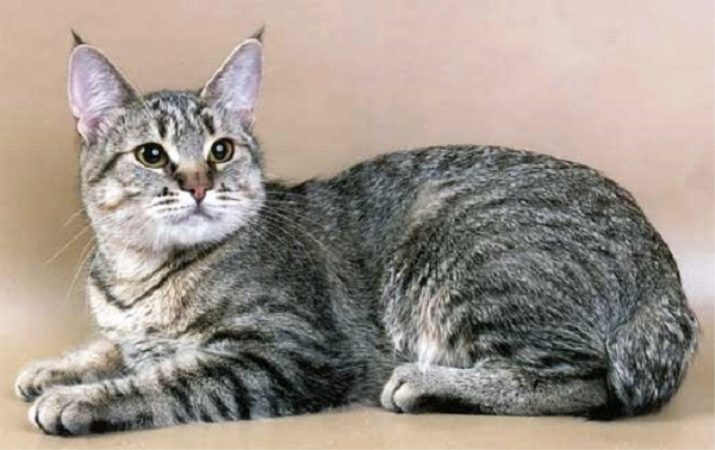
How to take care of it properly?
The excellent immunity of gray cats does not exempt from the need for constant care of the animal.Long coat requires careful and careful grooming. It is also important to monitor the cleanliness of the animal's bottom, rinse it as soon as necessary.
When combing long hair, you can use starch, after sprinkling it lightly on the wool cover. This helps to comb out tangled hair. The hind legs, tummy and tail require special attention.
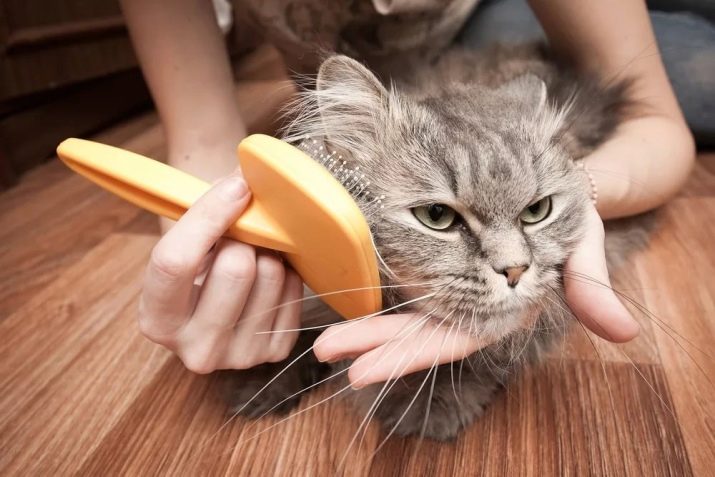
A mandatory, annual visit to the veterinarian is shown, where the pet's mouth, teeth and gums will be examined. An independent examination of the mouth for the detection of wounds and broken teeth will not be superfluous.
It is imperative to brush your cats' teeth. It is advisable to start such a procedure from an early age - the animal gets used to it, and in the future it will not be difficult to carry out the procedure. Initially, they resort to elementary mechanical cleaning with a piece of bandage. After some time, use a special brush and cat paste.
You should not use ordinary toothpaste for humans.
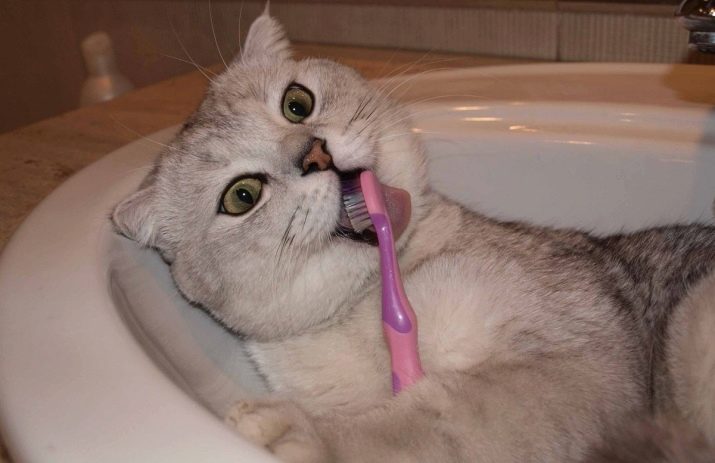
It is necessary to bathe long-haired cats 1-2 times a month, using a special softening shampoo and lotion so that the coat retains its silkiness.
After bathing the animal, you need to clean its ears using special products, for example, ProVET, TRIXIE Ear Care, Nutri-Vet Ear Cleanse, Dr. Clauders Ohrenpflege. However, boric alcohol and mineral oils can be used. Dirt is removed from the auricle with a swab without touching the auditory canal. Then wipe the pet's face with a swab with warm water.
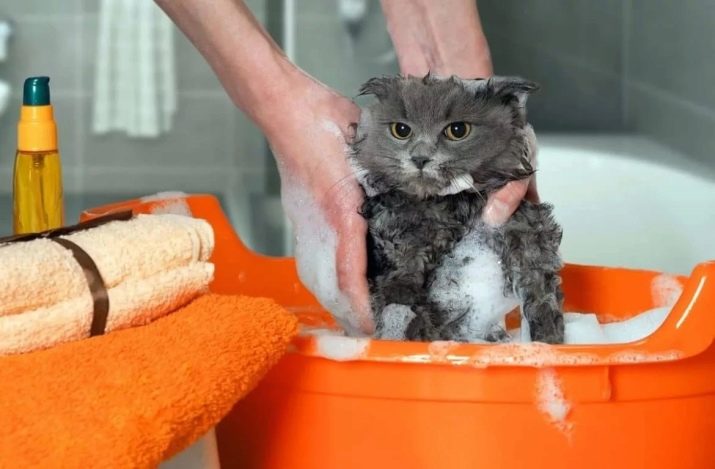
It is necessary to wash the animal daily, since saliva negatively affects the appearance of the cover, and the dirt accumulated in the eyes can lead to a number of eye diseases (conjunctivitis, mycoplasmosis, epiphora, lacrimation and the third eyelid). It is important to know the signs of these diseases and the methods of their treatment.
The claws of the animal are trimmed carefully and neatly. In this case, in order not to damage the foot, the most extreme part of the claw is cut off. During the procedure, it is advisable to gently communicate with the cat.
It is also better to carry out such activities from an early age so that kittens get used to it gradually.
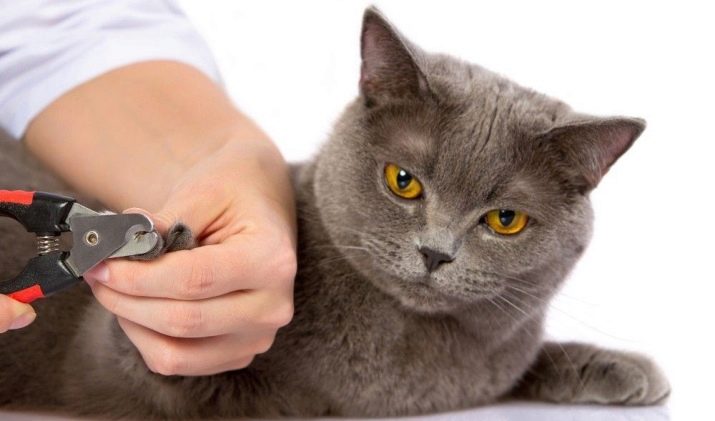
Any unique pet hair loses its quality without proper care. For all its aristocracy and independence, your pet largely depends on you. Love, affection and care will return you a hundredfold, great mood and good luck.
It is worth remembering the need for a balanced diet and annual vaccination. Owners, whose animals participate in exhibitions, need to approach their diet and their maintenance even more seriously.
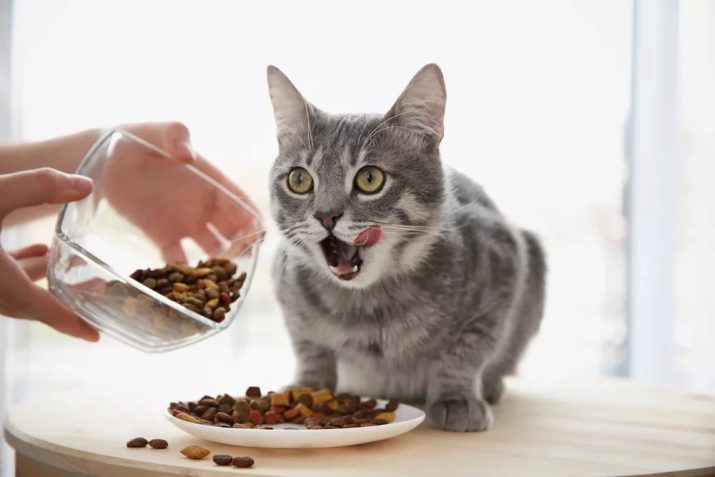
Grooming cats is not recommended, as such an operation can harm the animal:
- the structure of the hairs can change - become thin and brittle;
- hair growth may stop;
- lead to alopecia - pathological hair loss.
Important! Direct sunlight and high humidity during precipitation provoke the appearance of red spots. Violation of iodine-containing components in the body of cats leads to an unhealthy change in color to brownish.
For the British gray cat breed, see the video below.
